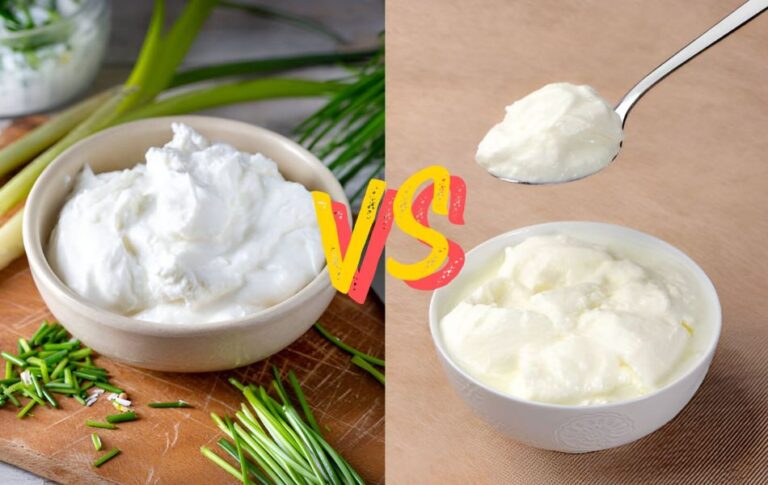Is it Possible to Freeze Almond Milk?
Almond milk, celebrated for its lactose-free qualities, has emerged as a preferred substitute for conventional dairy milk. However, the question arises: Can you freeze almond milk? Let’s find out if freezing almond milk is possible and how you can do it.
In Brief
Read the ins and outs of freezing almond milk, including methods, benefits, and thawing techniques. Learn how freezing can extend almond milk’s shelf life, enhance its texture and flavor, and explore creative uses for frozen almond milk cubes.
Understanding Almond Milk
First, let’s understand what almond milk is. Almond milk is a milk replacement made from almonds and water. It boasts a smooth, rich texture and a delightful nutty taste. People who can’t have dairy, follow a vegan diet or want a healthier option often choose almond milk. Moreover, almond milk isn’t just flavorful; it’s also naturally enriched with vitamin E.
Freezing Almond Milk: Yes or No?
Can you freeze almond milk? While it’s possible, it’s not recommended for certain uses. Almond milk tends to separate when defrosted, which can affect its creamy texture. If you plan to use almond milk for pouring over cereal or oatmeal, or in recipes where texture matters, freezing may not be ideal. However, it can still work well in recipes like smoothies or cooked dishes, though it may change the texture slightly.
Benefits of Freezing
Freezing almond milk offers several advantages that you shouldn’t overlook:
Extended Shelf Life
Almond milk typically has a relatively short shelf life, especially once opened. Freezing it can extend its lifespan by up to 6 months, allowing you to buy in bulk or make larger batches at home without worrying about wastage.
Time and Convenience
Life can get busy, and running to the store for almond milk might not always be convenient. Frozen almond milk saves time and keeps this essential ingredient on hand for your recipes.
Enhanced Texture and Flavor
Surprisingly, freezing almond milk can improve its texture and flavor. Freezing almond milk can transform it into ice cubes, which can make your smoothies, lattes, and cocktails creamier and frothier. Plus, using frozen almond milk won’t dilute your drinks like regular ice cubes.
Experimentation
Freezing almond milk allows you to get creative with flavors. Add ingredients like vanilla, cocoa powder, or fruit to your almond milk before freezing for exciting recipe variations.
How to Freeze Almond Milk
Now, let’s discuss how to freeze almond milk effectively. There are two primary methods:

Freeze Almond Milk in a Cube Tray
- Fill ice cube trays with almond milk, leaving some space at the top.
- Place the trays in the freezer until the almond milk freezes completely.
- Remove the almond milk cubes and transfer them to a freezer-friendly zip lock bag or airtight container, squeezing out excess air.
- Label the bag or container and store it in the freezer for up to 2 months.
Freeze Almond Milk in a Container
- Use an airtight, freezer-friendly container and pour in the almond milk, leaving some room for expansion.
- Seal the container tightly to prevent odors from affecting the milk.
- Label the container and store it in the freezer for up to 2 months.
Can You Freeze Almond Milk in the Carton?
While technically possible, it’s not recommended to freeze almond milk in its original carton. Freezing causes liquids to expand, potentially leading to bursting or leakage.
How Long Does Almond Milk Last in the Freezer?
Almond milk can maintain its quality for several months when stored in the freezer. Expect some texture and taste changes, such as slight separation and graininess. Generally, it’s safe to store frozen almond milk for up to 3 months, with some sources suggesting a maximum of 6 months.
Thawing Almond Milk
When you’re ready to use frozen almond milk, there are a few ways to thaw it:
Refrigerator
Allow almond milk cubes to thaw in the fridge. While the texture may change slightly, the taste remains the same.
Lukewarm Water
Place the frozen almond milk (in a container or zip-lock bag) in a bowl of lukewarm water to speed up thawing. This method takes about 2-3 hours.
Stovetop
For the quickest thawing, heat the almond milk in a small saucepan on medium heat after releasing it from its container or ice cube trays. This method can also make the milk creamier.
Using Thawed Almond Milk
Once your almond milk is thawed, you can use it in various ways:
- Add it to smoothies for extra creaminess.
- Use it to create almond milk ice cream or yogurt.
- Melt it down for recipes that require almond milk.
- Incorporate it into your coffee for a dairy-free latte.
- Enjoy a refreshing glass of almond milk, just like fresh milk.
Remember that thawed almond milk remains fresh for about 3-5 days in the refrigerator. If you need to defrost it quickly, place the cubes in a container with warm water for a few minutes.
Can You Refreeze It?
Once almond milk is thawed, it’s best not to refreeze it. To avoid waste, only thaw what you intend to use for a recipe or consumption.
In case you’re interested in making homemade almond milk, you can easily prepare it by blending almonds with water and freezing it in ice cube trays for convenient use.
See Also – Freezing and Using Leftover Coconut Milk: Tips and Tricks
FAQ’S
Q: How do I fix separated thawed almond milk?
A: Blend it briefly to restore its texture.
Q: How long does thawed almond milk last?
A: About 3-5 days, so freeze it before it goes bad.
Q: What changes occur when almond milk is frozen?
A: Freezing may cause separation, but a quick blend will fix it.
Q: When should I freeze almond milk?
A: Freeze it when you don’t use it within a few days to avoid spoilage.
By freezing and thawing almond milk correctly, you can enjoy it in your favorite recipes without quality loss. So freeze that almond milk, and savor its creamy goodness!







